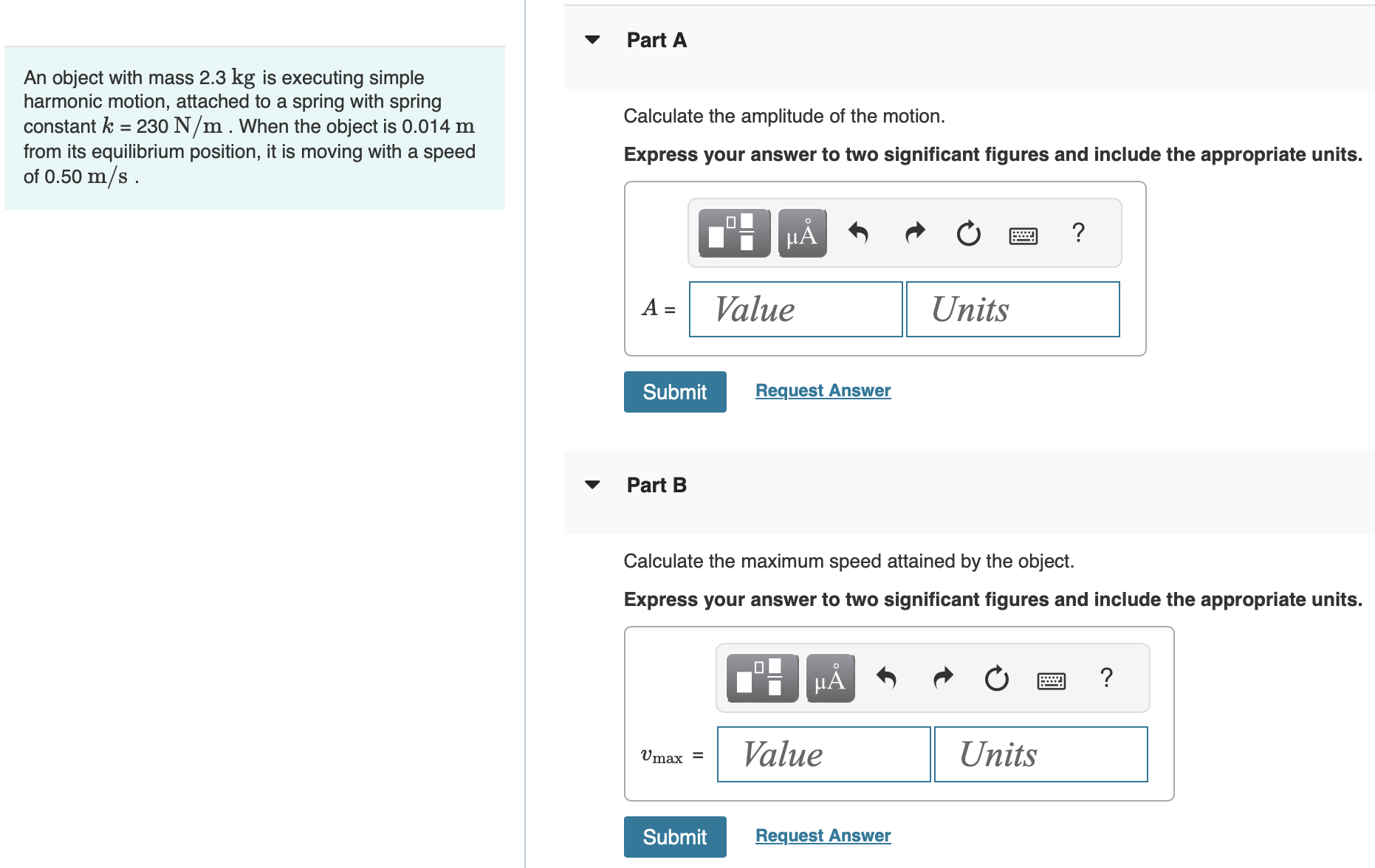An object with mass 2.3 kg is executing simple harmonic motion, attached to a spring with spring constant k = 230 N/m. When the object is 0.014 m from its equilibrium position, it is moving with a speed of 0.50 m/s. Part A Calculate the amplitude of the motion. Express your answer to two significant figures and include the appropriate units. Submit Request Answer Part B Calculate the maximum speed attained by the object. Express your answer to two significant figures and include the appropriate units. Submit Request Answer
